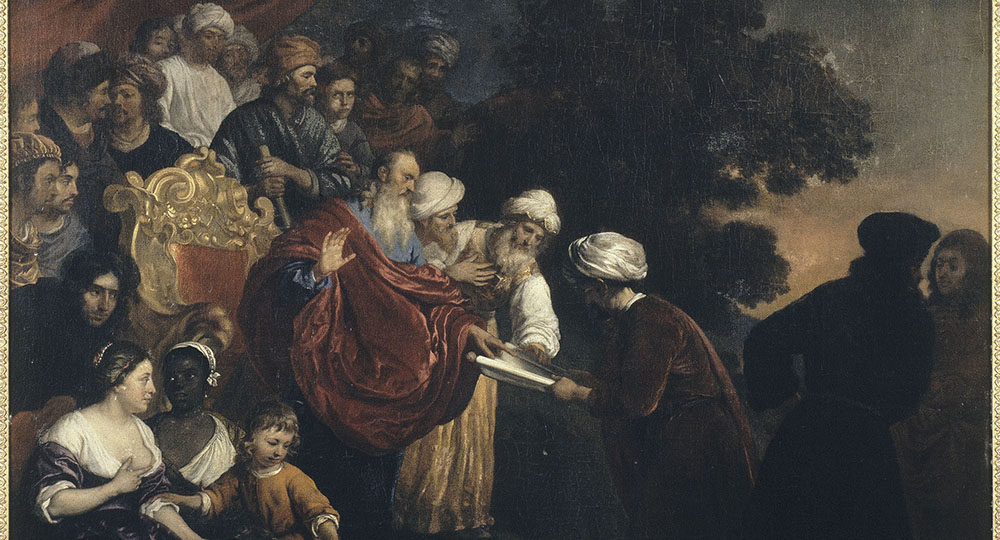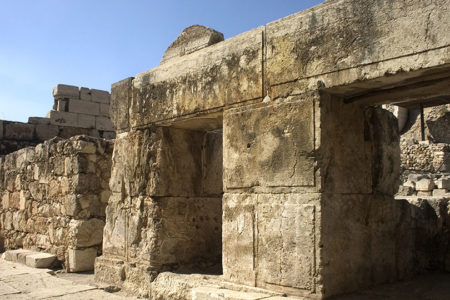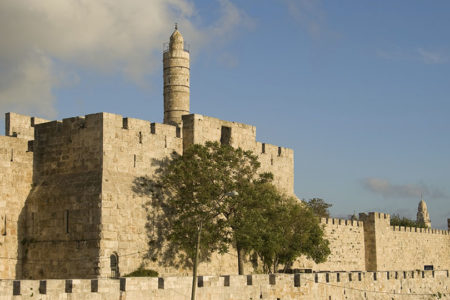Zerubbabel: Man With a Mission
Zerubbabel was born to a Judean family exiled in Babylon sometime after the second Jewish deportation of 597 B.C. His name is of Babylonian origin and means “seed or offspring of Babylon.” He came from a lineage that was heir to the Davidic throne, since he was the grandson of King Jehoiachin (also called Jeconiah, 1 Chr. 3:17–19; cf. Mt. 1:12), second to the last king of Judah.
Zerubbabel is called the “son of Shealtiel” (Ezra 3:2, 8; 5:2; Neh. 12:1; Hag. 1:1), but the genealogy in 1 Chronicles 3:19 identifies him as the son of Pedaiah, Shealtiel’s younger brother. One commentary explains:
This problem is usually resolved by assuming that Pedaiah was the adoptive father of Zerubbabel, or that Shealtiel died childless and that Pedaiah married the widow of his brother and had a son with her; this son, in accordance with the law of levirate marriage (Deut. 25:5–10), was legally considered to be a son of Shealtiel.1
Years before Babylon destroyed Judah, Jeremiah prophesied the Jewish people would be in exile for 70 years (Jer. 25:11), after which they would be restored to their land. In 539 B.C. Babylon fell to the Persian Empire under Cyrus II. Cyrus granted the Jewish captives the right to return to Jerusalem and rebuild their Temple (2 Chr. 36:22–23; Ezra 1:2–3). He also funded the project (Ezra 1:2–4; 6:3–5, 8–10).
Construction Troubles
Zerubbabel was selected to lead the first group of returnees in 536 B.C. (Ezra 2:2; Neh. 7:7; 12:1). Under his leadership, nearly 50,000 people took advantage of Cyrus’s offer and returned to Jerusalem (Ezra 2:64–65). When Zerubbabel arrived, he was appointed governor and given oversight of the Temple construction (Hag. 1:1). Immediately, along with the priests, he restored the altar of burnt offering and in the second month of the second year started to lay the Temple’s foundation (Ezra 3:2).
Soon after work began on the Temple, opposition arose. Samaritans (a mixed race of Jews and Gentiles from northern Israel, 2 Ki. 17:24–31) volunteered to help. Zerubbabel rejected their offer because they did not follow the God of Israel. An ungodly alliance with them would have weakened or even stopped Israel’s resolve to finish the project.
Rejected, the Samaritans wrote to the Persian court, petitioning that the project be stopped. King Artaxerxes shut down the work, and construction ceased for 16 years.
Other factors also contributed to the stoppage:
- Gentiles hired counselors to intimidate the workers and frustrate construction.
- Workers grew discouraged because of their personal poverty; lack of food and shelter; and the deplorable condition of Jerusalem, which lay in rubble.
- People began building their own houses and businesses (Ezra 4). The prophet Haggai castigated the returnees for their selfishness and negligence in not finishing the Temple.
Sixteen years later, an angel informed the prophet Zechariah that Zerubbabel would complete the project (Zech. 4:1, 8). Through Zechariah, the angel told Zerubbabel the Temple would not be completed through the strength, wisdom, wealth, or military power of Judah, but exclusively through the power of God’s Spirit. This message, along with others from Haggai and Zechariah, inspired Israel to resume construction.
Singing and Weeping
As the Temple foundation was laid, people reacted in two ways. Those who had never seen the grandeur of Solomon’s Temple sang, shouted, and praised the Lord. But the older generation wept loudly and profusely because Zerubbabel’s Temple could not compare in size or splendor to the Temple they remembered (Ezra 3:8–13). Neither did this Temple’s Holy of Holies possess the Ark of the Covenant or the Shekinah glory of God.
God silenced the critics: “For who has despised the day of small things? For these seven rejoice to see the plumb line in the hand of Zerubbabel. They are the eyes of the Lᴏʀᴅ, which scan to and fro throughout the whole earth” (Zech. 4:10). In other words, while Zerubbabel worked, the Lord watched over the project, making sure it would be completed according to His will. Nothing is hidden from God’s infinite intelligence and omniscience. He providentially watches over Israel against its enemies and will accomplish His sovereign program for the Jewish people.
God told Israel, “But from this day I will bless you” (Hag. 2:19). He assured Zerubbabel that Gentile opposition could not stop completion of the Temple, nor would it destroy Israel. In his final message, Haggai further encouraged Zerubbabel by announcing that Israel will ultimately triumph over all its enemies when the long-expected Messiah comes to judge the Gentiles (vv. 20–23).
Haggai told Zerubbabel he was specifically “chosen” to be “like a signet ring” (v. 23) before the nation of Israel, not only then but in the future. A signet ring represents a king’s royal authority. It was used as the king’s signature to validate a sealed document (1 Ki. 21:8) and guarantee its promises would be fulfilled (Gen. 38:18). By making Zerubbabel His signet, God reversed the curse and judgment pronounced on Coniah (also called Jeconiah) the son of Jehoiakim (Jer. 22:24). It was prophesied of Coniah, “Thus says the Lᴏʀᴅ: ‘Write this man down as childless, a man who shall not prosper in his days; for none of his descendants shall prosper, sitting on the throne of David, and ruling anymore in Judah’” (v. 30). This prophecy did not mean the king would be childless, for he was not (1 Chr. 3:17–18). Rather, he would be written childless—that is, none of his descendants would be listed with the kings of Judah.2
In other words, God renewed His promise that the Davidic line would not die out but would one day give birth to Israel’s Messiah. Zerubbabel is recorded in Christ’s genealogy (Mt. 1:12; Lk. 3:27). This promise assured the governor that blessing would once more flow to Judah in his day and symbolized the blessing yet in store for Judah during the Messiah’s reign.
Haggai’s prophecy to Zerubbabel was irrefutable evidence to Israel and its enemies that God’s Spirit would enable the nation to finish reconstructing the Temple. Four years later, Zerubbabel put the capstone in place, signifying the Temple was finished (Ezra 6:13–18; Zech. 4:7–10). The year was 515 B.C., beginning what is commonly called the second Temple period.
God is sovereign over all the earth, and His prophetic program will succeed and accomplish what He has divinely decreed.
ENDNOTES
- B. T. Arnold and H. G. M. Williamson, Dictionary of the Old Testament Historical Books (Downers Grove, IL: InterVarsity Press, 2005), 1,016, Libronix Digital Library System.
- For a fuller explanation see David M. Levy’s book When Prophets Speak of Judgment: Habakkuk, Zephaniah, Haggai (Bellmawr, NJ: The Friends of Israel Gospel Ministry, 1998), 179–180.








I came to this article to see if I could resolve whether or not Zerubbabel was the same person as SHESHBAZZAR.
Thanks for the good article.
Thank you very much for sharing us this wonderful Bible story. You have done a great job. May the good Lord be with you.
Thanks for this,it’s very educative.
A succinct account about the Governor Zerubbabel and his commission to lead the remnant of Israel back from Babylon to Jerusalem, and begin building the temple again. An awesome character and in the lineage of Jesus. Amazing weaving of Father Gods purpose. Thank you for joining the dots.
Excellent Article. Thank you, this helped me understand how God always has a plan and His work goes on through His God ordained people. Very encouraging.
Reading this article from the Fiji Islands, in the South Pacific. We are Pentecostals of Pacific Harbour, Fiji. Just this last few weeks, God has been placing the Book of Haggai as a theme for our Youths for this week. I wasn’t expecting this! I was thinking I will just browse through with a few bullet points here and there. This article is so moving and powerful. Thank you, Blessed to have come across this. So sharing this with the Youths.
Am blessed with this powerful word God is watching his program so to accomplish it
Thank you very much for this insight
Zerubbabel’s life and mission; very thought provoking and relevant for these times
Am refreshed. Opposition can’t stop the work God has called me to. God bless you Sir.
This has blessed me tremendously.
thank you for sharing this, it was very helpful
we must continue the work of the LORD, not by our strength but on His.
God bless you
Thank you bro most precious in Christ. I cried reading this. Praise the Lord.
Thank you for sharing this it was helpful.
Thank you for sharing with encouraging insight!
This has been the foundation for a prophetic renewing of godly education in our country – Latvia. The Temple that has to be renewed is the revival that once was in our land and that leads to a great work amongst the children at that time. God is calling us – in this generation – to raise up Haggais, Zerubbabels, Nehemiahs, Ezras and Jozuas.
The season of Cyrus continues!
Thank you for the detailed explanation of this specific Biblical person. Today 7th April 2019 I read from scripture that was directly connected to a situation my husband and I are in. The importance of continuing the Lord’s work and not building our own ‘houses’ confirms our call and the direction of our work. The vine, fig, olive now being blessed, is encouragement that as we are called to the work, so will our work be blessed and the Lord directs and makes provision for his servants. The fact that Zerubbabel was a man with a mission and his royal bloodline was my main interest. Who was this man returning from exile? He was the grandson of a King.. selected to be the Governor and rebuild. A wonderful piece of information. To God be the glory and your work be blessed.